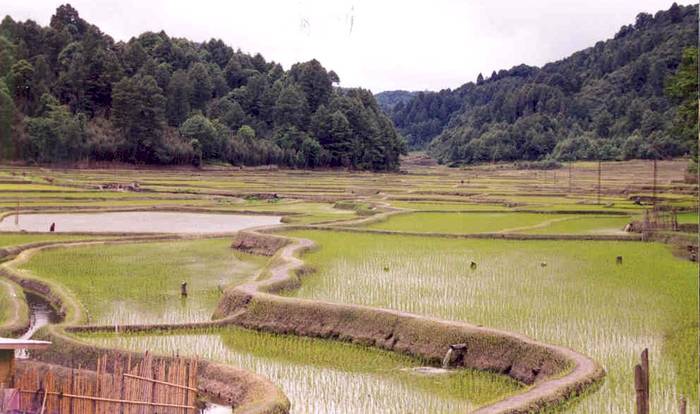Wet rice cultivation with indigenous knowledge in India
The Apatanis tribe of Arunachal Pradesh, India have developed a remarkable system of soil and water management. The terraces are built on alluvial deposits washed down from the hills and sometimes very thick deposits of medium and fine sand, rock fragments are found below the soil. Intense and well distributed rainfall coupled with thick vegetative cover results in deep disintegration of rocks and results into formation of deep soils, which are well drained, dark greyish and humic black. These soils/lands have been used for wetland rice cultivation for generations, making them self reliant in rice production. This system captures every stream of water rising from the surrounding hills as soon as it emerges from the forest. Nutrient management is done through the recycling of paddy and agricultural wastes. Animal wastes and droppings are removed and other wastes are recycled at regular interval. After the rice crop is harvested, cattle are allowed free grazing and entire cow dung is recycled in situ.
These farmers are well aware of environment and their ecologies. Entire hills surrounding the valleys and uplands are fully kept conserved as forests. This helps in checking soil erosion, silting in rivers, drying of water resources, and loss of nutrients, loss of flora, fauna and finally conservation of natural resources (Prasad and Sharma, 1994).


